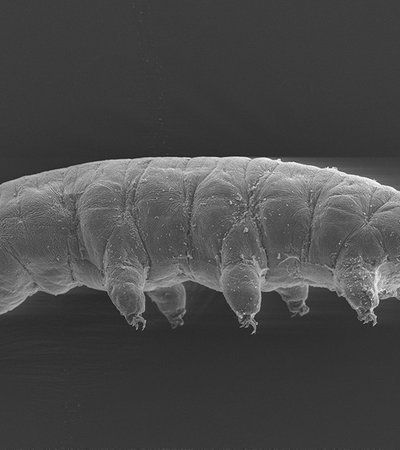Distribution/habitat
In the year 1928, scientists found the first species of this primaeval phylum (Hypsibius callimerus) on Ötztal Wildspitze. Since then, some 120 water bear species have been described in Austria. With a size of approx. 0.2 to 0.5 mm, they can be found globally in fresh and saltwater environments or in humid moss and foliage locations. In the Alps, types particularly adapted to the highlands are found. Hypsibius klebelsbergi inhabit melt holes on the ice surface, e.g. on Rotmoosferner glacier.
Description/characteristics
In the melt holes on the glaciers, pollen, bacteria and algae brought in by the wind accumulate, on which the water bears feed. With extendable mouthparts they tap the food and suck it out. The animals’ German name comes from the fact that under the microscope, water bears with their head and quadrinomial body, each with a pair of legs with claws or sucker-feet, look like miniature bears. The 4th pair of legs is mainly for holding on, the others for movement. Water bears have neither a bloodstream nor respiratory organs. They absorb oxygen from water through diffusion.
Special features
In order to efficiently protect themselves against cold, water bears have a high sugar content in their body fluids. In addition, they can survive extended periods without oxygen. In bitter cold they can retract their extremities and form a small barrel. In this ball-shaped, cyst-like state they can withstand extreme temperatures of -270°C and that even for several years. Special proteins prevent ice crystals from forming in the water bears’ cells.
Endangerment/protection
As the glaciers continuously retreat and melt away, scientists believe it is possible that water bears such as the Hypsibius klebelsbergi inhabiting glaciers may become extinct in the future.


















